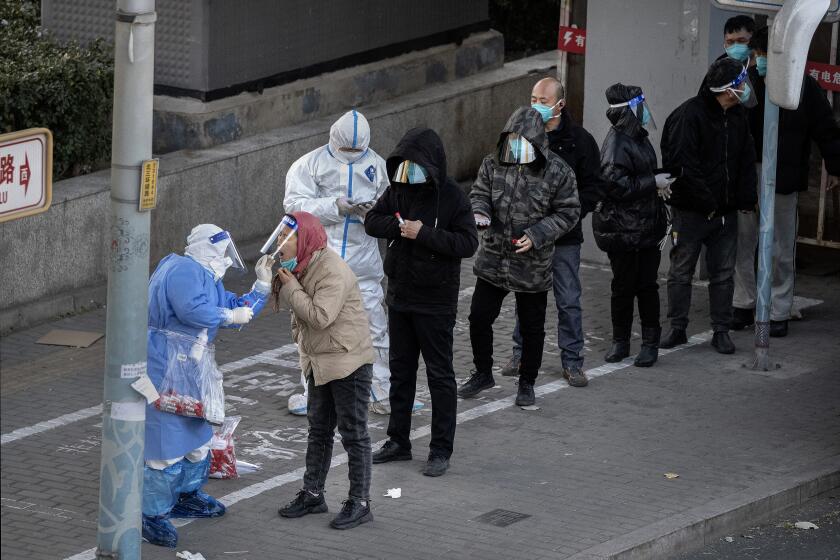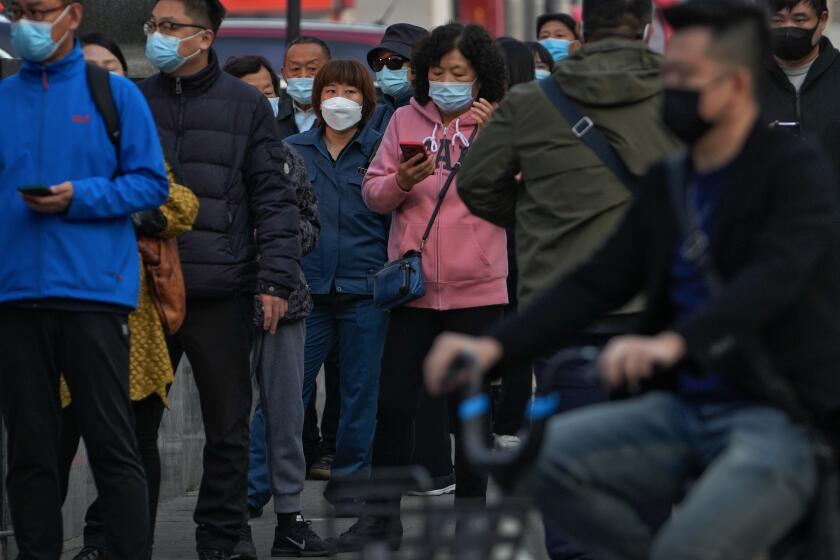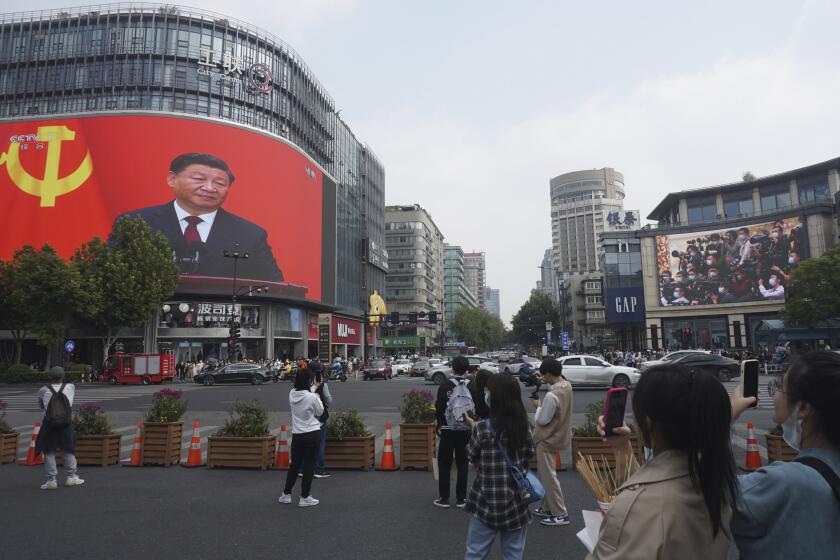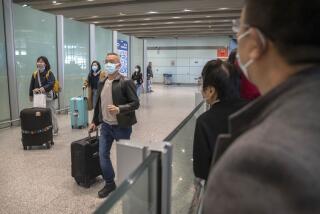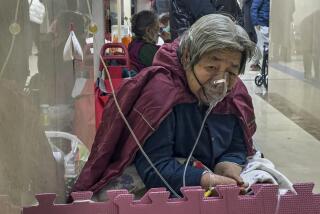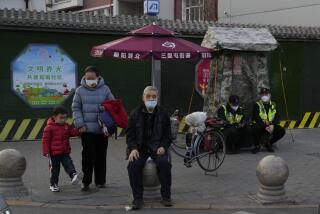China eases some controls but gives no sign when âzero COVIDâ might end
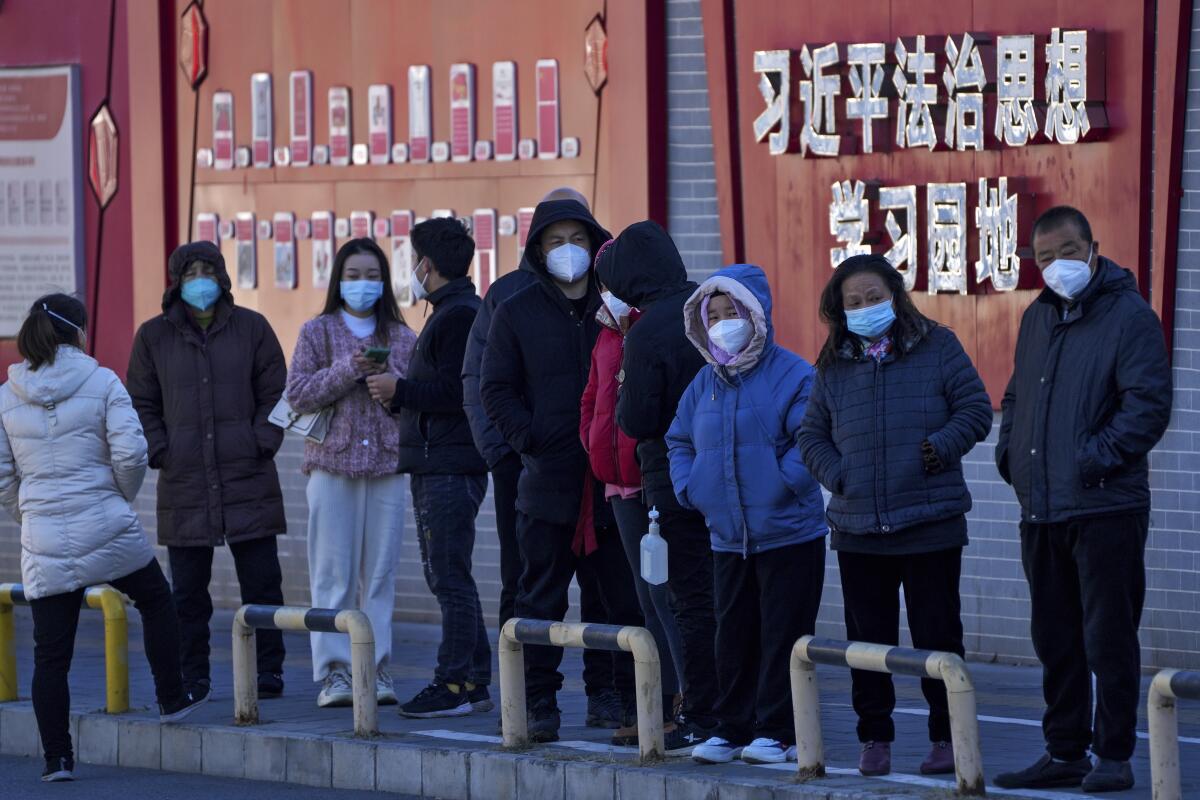
BEIJING â China is easing some of the worldâs most stringent anti-COVID controls, saying that new coronavirus variants are weaker. But authorities have yet to say when they might end the countryâs âzero-COVIDâ strategy, which continues to confine millions of people to their homes and set off recent protests and demands for President Xi Jinping to resign.
On Monday, for the first time in months, commuters in Beijing and at least 16 other cities were allowed to board buses and subways without a negative coronavirus test in the previous 48 hours. Industrial centers, including Guangzhou, near Hong Kong, have reopened markets and businesses and lifted most curbs on movement, while keeping restrictions on neighborhoods with infections.
The government announced plans last week to vaccinate millions of people in their 70s and 80s, a condition for ending âzero-COVIDâ restrictions that have kept most visitors out of China and disrupted manufacturing and global trade.
That spurred hopes for a quick end to the zero-tolerance policy. But health experts and economists warn that it would be mid-2023 and possibly 2024 before vaccination rates are high enough and hospitals are prepared to handle a possible rash of infections.
âChina is not ready for a fast reopening yet,â Morgan Stanley economists said in a report Monday. âWe expect lingering containment measures. ⌠Restrictions could still tighten dynamically in lower-tier cities should hospitalizations surge.â
The changes follow protests demanding an end to âzero COVIDâ but are in line with earlier Communist Party promises to reduce disruption by easing quarantine and other restrictions. The changes have been highly publicized in a possible effort to mollify public anger, but there is no acknowledgment that any of the changes might have come in response to the protests in Shanghai and other cities.
Protesters in China are eager to see an easing of âzero-COVIDâ rules, but health experts warn that doing so could prompt a massive health emergency.
China is the only major country still trying to stamp out transmission, whereas the United States and others have relaxed restrictions to try to live with the virus, which has led to the deaths of at least 6.6 million people and infected almost 650 million.
The protests in China began Nov. 25 after at least 10 people died in a fire in an apartment building in Urumqi in the northwest. Authorities denied suggestions that victims were blocked from escaping or firefighters from responding by locked doors or other anti-virus controls. But the disaster became a focus for public frustration.
Ahead of the protests, the Communist Party had promised to make âzero COVIDâ less costly and disruptive but said it was sticking to the overall containment strategy.
The party earlier announced updates to the strategy to make it more focused. Authorities began suspending access to buildings or neighborhoods with an infection instead of locking down whole cities. But a spike in cases starting in October prompted areas across China to close schools and confine families to cramped apartments for weeks at a time.
Chinaâs largest city, Shanghai, has started administering an aerosol COVID-19 vaccine that recipients suck in through their mouths, state media said.
Authorities say they are âfurther optimizingâ controls and warn that the country needs to stay alert.
China faces ânew situations and tasksâ because of the âweakening of the pathogenicityâ of the latest Omicron variant, a deputy premier in charge of the anti-COVID campaign, Sun Chunlan, said last week. She said China has âeffective diagnosis and treatmentâ and has vaccinated more than 90% of its people.
The government of Shanghai, the countryâs financial capital, announced that visitors to most sites would require to show only a negative coronavirus test in the last week instead of in the previous two days. Schools, hospitals and bars still will require a test within the last 48 hours.
Despite the changes, Beijing and other cities are telling some residents to stay home or enforcing other restrictions on neighborhoods with infections.
Chinaâs economic growth accelerated in the latest quarter but was still among the slowest in decades as cities wrestled with repeated COVID lockdowns.
Travelers at the Chinese capitalâs train stations and three airports are required to show a negative virus test within the previous 48 hours. Elsewhere, Guangzhou and other cities said areas deemed at high-risk for infection still face additional curbs.
A negative virus test within the last 72 hours still is required to enter public buildings in the vast metropolis of Chongqing in the southwest, a hot spot in the latest infection spike. Dining in restaurants in some parts of Beijing still is prohibited.
A newspaper reported last week that some Beijing residents who have mild or asymptomatic COVID-19 cases would be allowed for the first time to isolate themselves at home instead of going to one of Chinaâs sprawling quarantine centers. The government has yet to confirm that.
Forecasters say the struggling economy, already under pressure from weak demand for Chinese exports and a government crackdown on debt in the real estate sector, might be contracting this quarter.
Breaking News
Get breaking news, investigations, analysis and more signature journalism from the Los Angeles Times in your inbox.
You may occasionally receive promotional content from the Los Angeles Times.
Regulators have responded by freeing up more money for lending and are trying to encourage private investment in infrastructure projects. They have eased some financial controls on real estate developers to reverse a slump in one of Chinaâs biggest sectors.
On Monday, the government reported 30,014 new coronavirus cases, including 25,696 without symptoms. That was down from last weekâs daily peak of more than 40,000 but still close to record daily highs for China.
Xiâs government has held up âzero COVIDâ as proof of the superiority of Chinaâs system compared with that of the U.S. and Western countries. Chinaâs official death toll stands at 5,235 since the start of the pandemic, compared with a U.S. count of 1.1 million.
China also has suffered a possible rise in fatalities among people with cancer, heart disease and other conditions who struggled to get care while hospitals focused on treating coronavirus cases. Data on those deaths havenât been reported.
More to Read
Sign up for Essential California
The most important California stories and recommendations in your inbox every morning.
You may occasionally receive promotional content from the Los Angeles Times.
